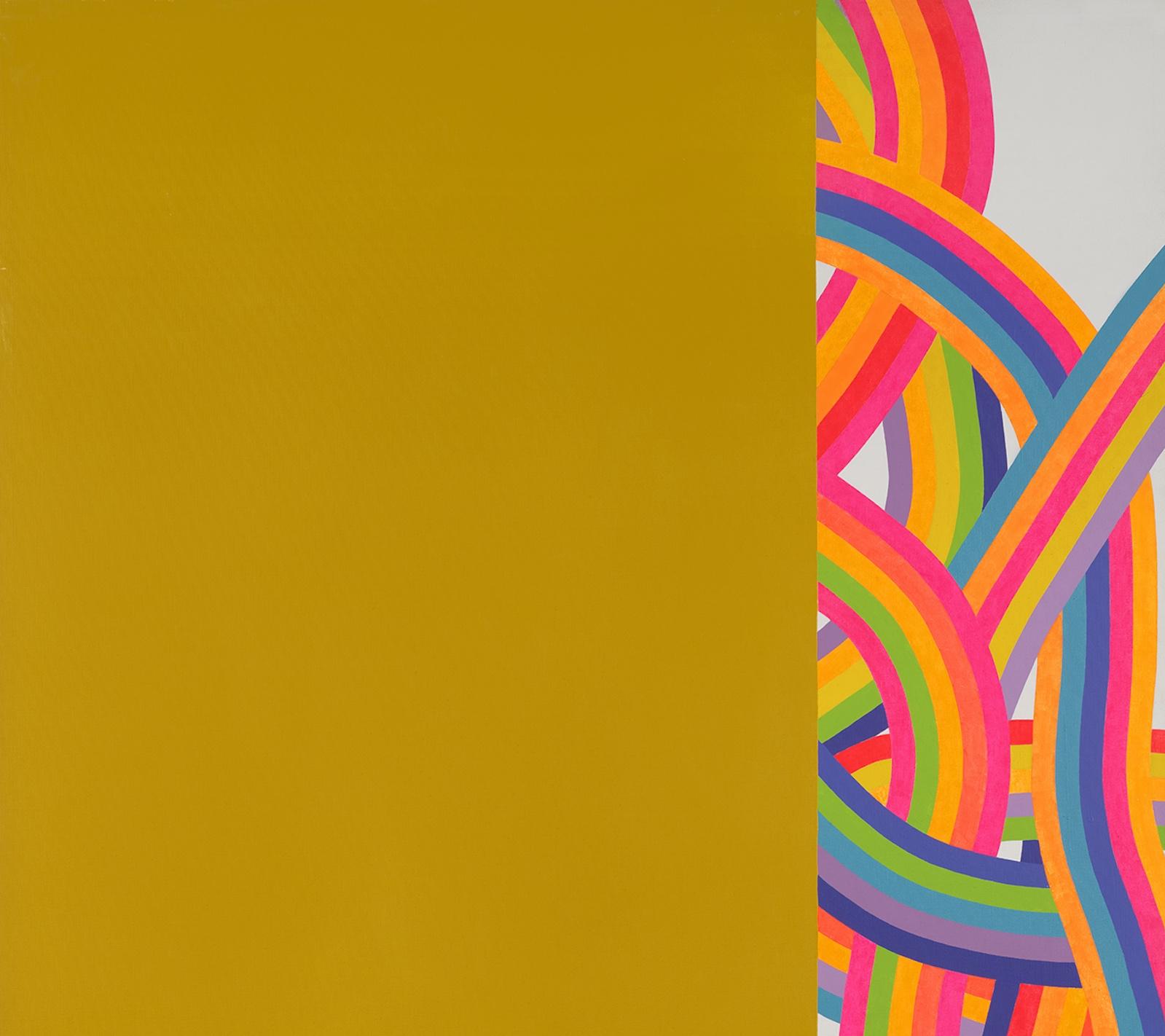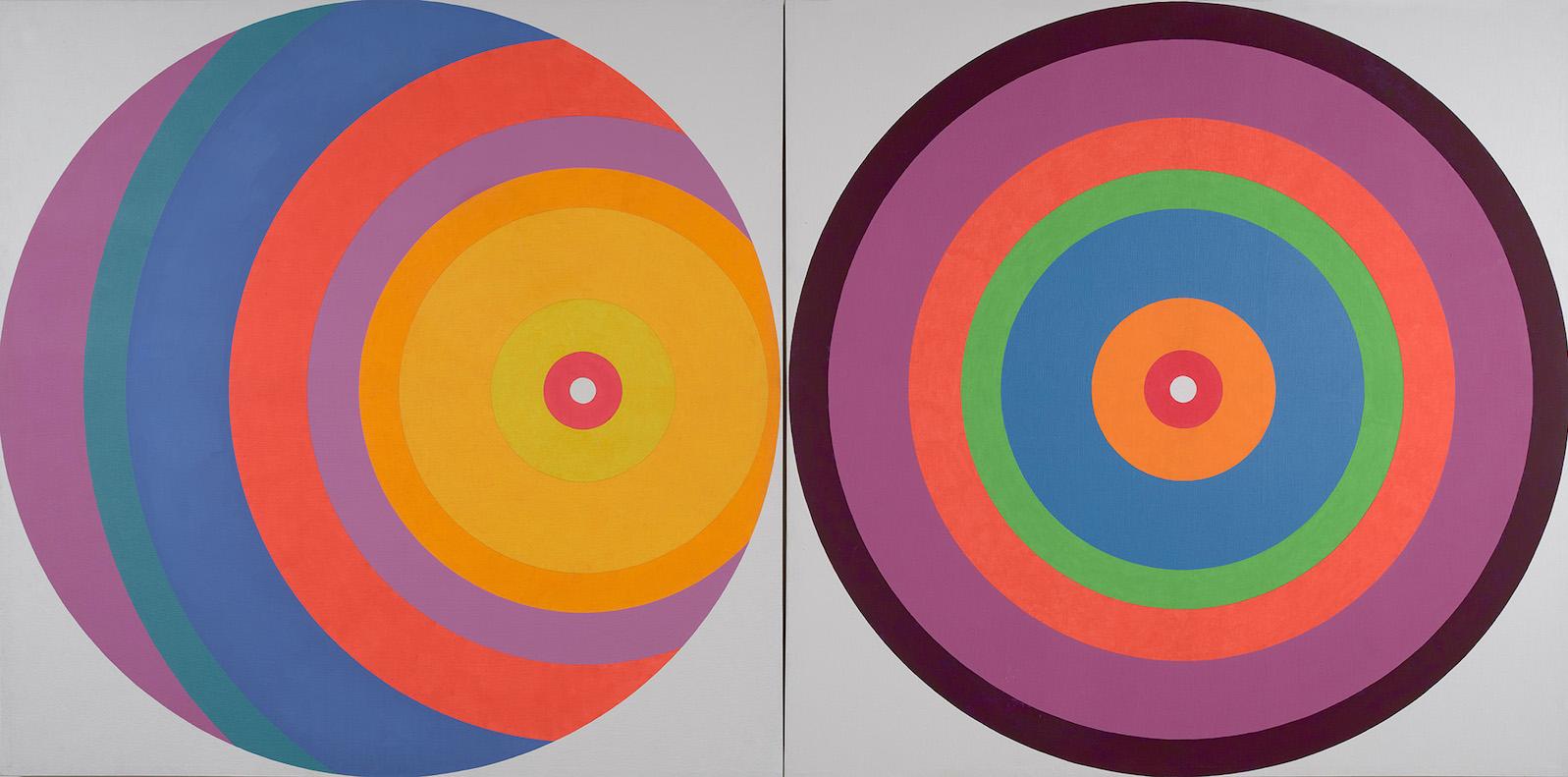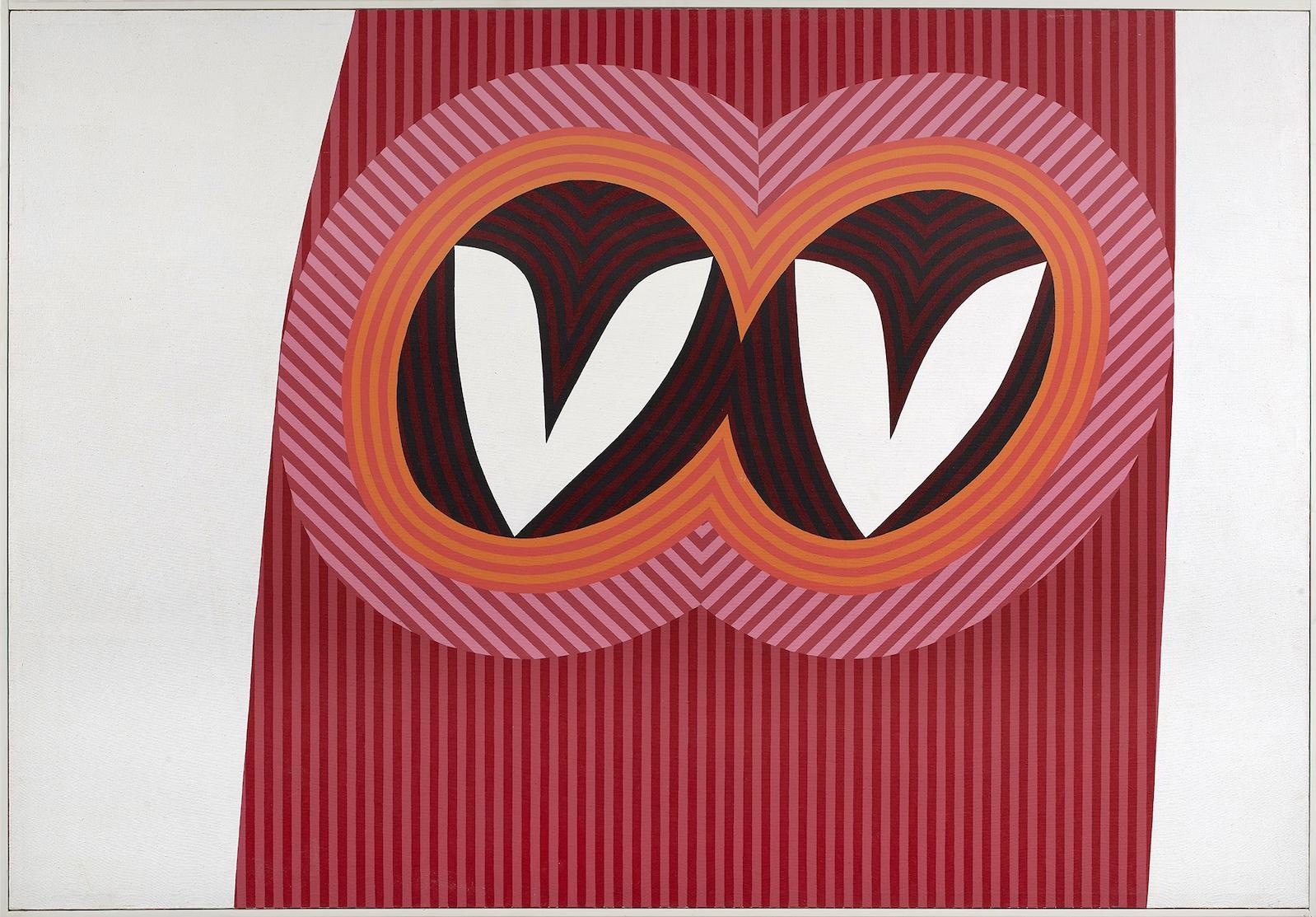After traveling to Europe in the early 1960s, Henry moved to Mendocino, California, which was beginning to attract artists. In 1966, after divorcing her husband, Wilbur, Henry began to pursue her passion for art full-time. By the mid-1960s, her stylistic trajectory coincided with the Op Art movement, which was at a peak in 1965, when the Museum of Modern Art opened The Responsive Eye.
The show presented works of art “less as objects to be examined than as generators of perceptual response in the eye and mind of the viewer.” In Mendocino, December 11 (1965) black and grey lines at both regular intervals and ninety-degree angles create an Op Art illusion as shapes and patterns appear to move and fluctuate.
In Love Jazz (1965), two abstract hearts seem to beat together in rhythmic unison, in time with the variously striped patterns that both unite and divide them. By 1967 she was creating her On/Off series, featuring round-shaped canvases that, with a touch of humor, appear to be actual moving targets, their concentric circles projecting and receding, with some seeming to be retreating from the canvas itself. In Euphoric Concentration (1969) its daringly juxtaposed colors arrest the eye with the immediacy of Pop Art.
































